CIDRAP-ASP hosts a variety of activities and resources intended for clinicians, researchers, students, patients, and members of the public who want to learn more about appropriate antimicrobial use and the prevention of antimicrobial resistance (AMR).
CIDRAP-ASP Communications, Outreach, and Engagement Activities
In collaboration with BB Partners, CIDRAP-ASP developed a Communication Toolkit aimed at community practitioners and patients to provide basic information on antibiotic stewardship. The toolkit is free and available for anyone to download, and was supported by a grant from Wellcome.
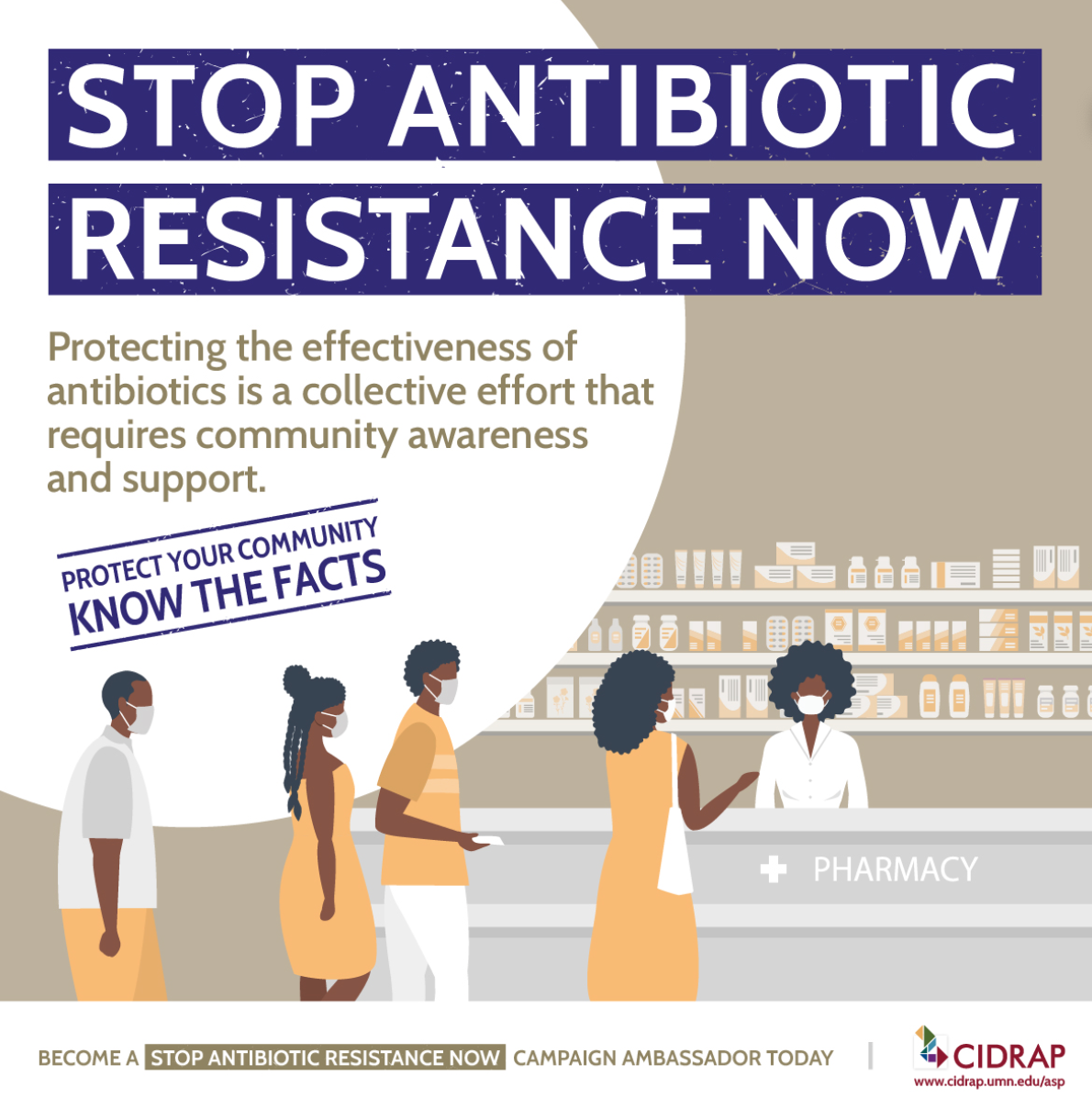
AMR is a highly complex topic that has struggled to secure sufficient interest and participation from the public and patients. If we want to be successful in reducing the spread of AMR in our communities, we need to better understand how AMR is affecting people around us.
Storytelling, advocacy, and involvement of patients and the public are all necessary components of our work.
CIDRAP-ASP has partnered with The AMR Narrative to promote AMR advocacy, increase awareness, and develop a community of AMR champions and survivors.
We aim to equip patients and the public with the necessary knowledge to help them better understand AMR and issues related to it. Our goal is to promote and boost advocacy capacity to create a critical mass of people sustaining action for change.
Throughout 2023, we are hosting series of events in collaboration with The AMR Narrative to encourage meaningful conversations around AMR among healthcare professionals, patients and the public.
For more information regarding upcoming events, check out the CIDRAP-ASP AMR TweetChats page or the dedicated 'Events' page on The AMR Narrative website.
CIDRAP-ASP produces two popular podcasts—"Superbugs & You" and "Stewardship Spotlight"—and a regular webinar series that feature diverse perspectives and topics related to AMR.
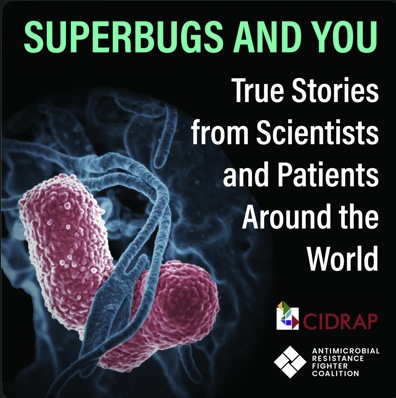
Superbugs & You Podcast
The "Superbugs and You" podcast series brings together stories about drug-resistant infections from patients, clinicians, and researchers. "Superbugs and You" is produced in collaboration with the Antimicrobial Resistance Fighter Coalition and supported by a grant from Becton, Dickinson and Company (BD).
Webinar Series
CIDRAP-ASP produces webinars on a variety of AMR and antimicrobial stewardship topics, including AMR surveillance, the implementation and use of diagnostic tests, the role of nurses in antimicrobial stewardship, penicillin allergy testing, appropriate pediatric prescribing, and much more.
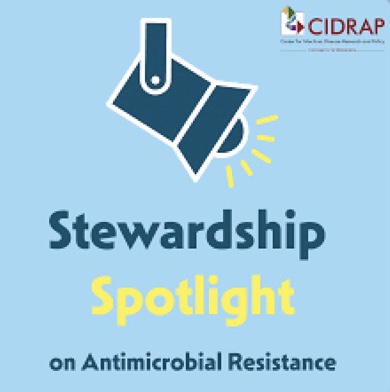
Stewardship Spotlight Podcast
The "Stewardship Spotlight" podcast series features interviews with global AMR experts on diverse and relevant topics, including rapid diagnostics for bloodstream infections, health literacy and science communication, sustainable antibiotic development, and much more.
CIDRAP-ASP publishes a monthly newsletter containing project updates, global AMR news and guidelines, regional AMR and antimicrobial stewardship case studies, patients' stories and projects that aim to center patients in discussions about AMR, and global activities related to AMR and antimicrobial stewardship in agriculture, veterinary medicine, and the environment
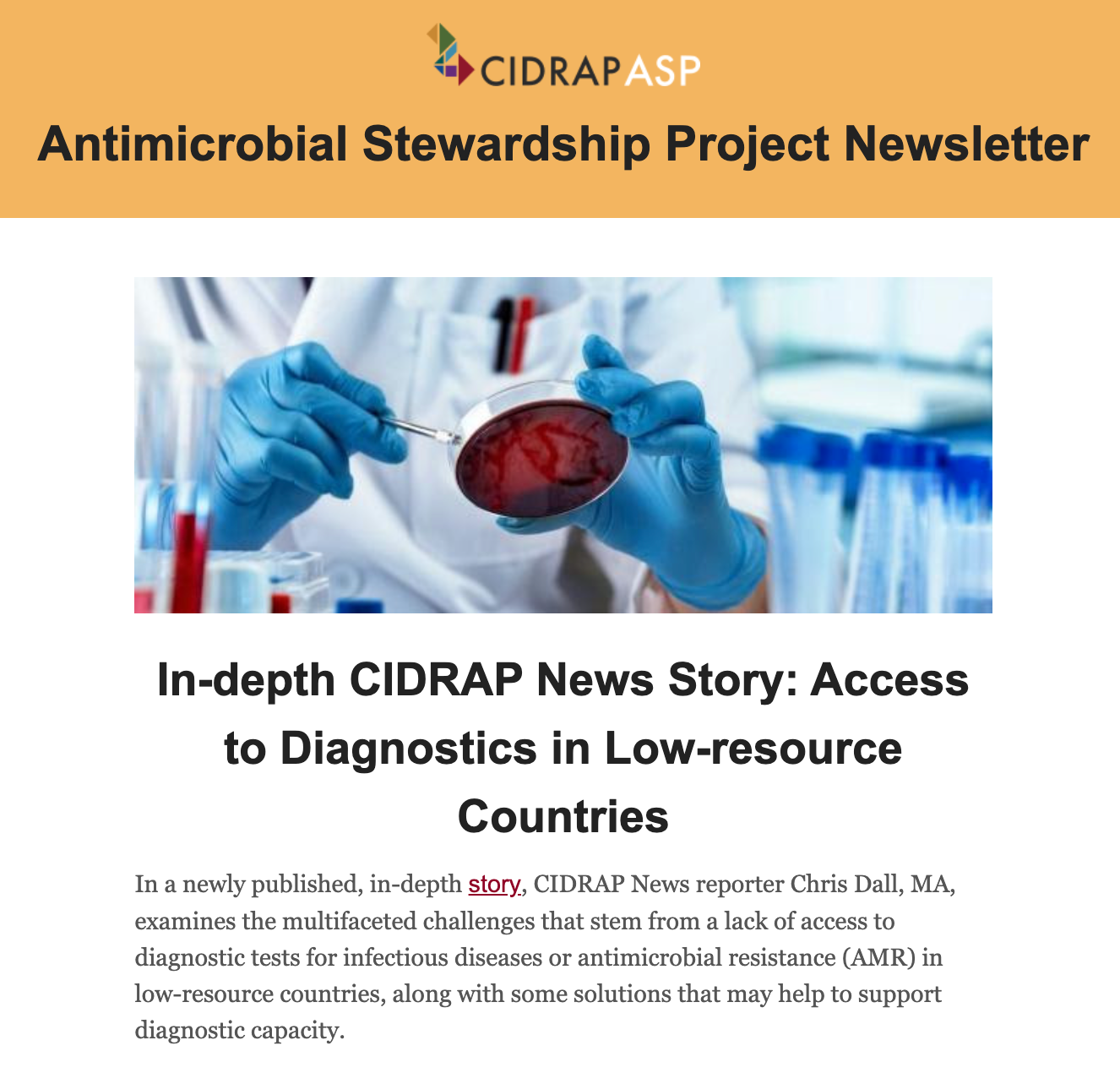
CIDRAP-ASP produced a weekly analysis of the literature on antimicrobial resistance (AMR) and stewardship, CIDRAP-ASP’s Francesca Chiara, PhD, MPH, MSc, Jamie Umber, DVM, MPH, and Natalie Vestin, MPH, highlighted articles that brought new and relevant information and perspective to global AMR work.
Students Against Superbugs AMR Writers and Content Creators Program
In collaboration with Students Against Superbugs Africa, CIDRAP-ASP's Francesca Chiara, PhD, MRes, MSc, Chris Dall, MA, and Natalie Vestin, MPH, provided mentoring and editing assistance for the AMR Writers and Content Creators Program.
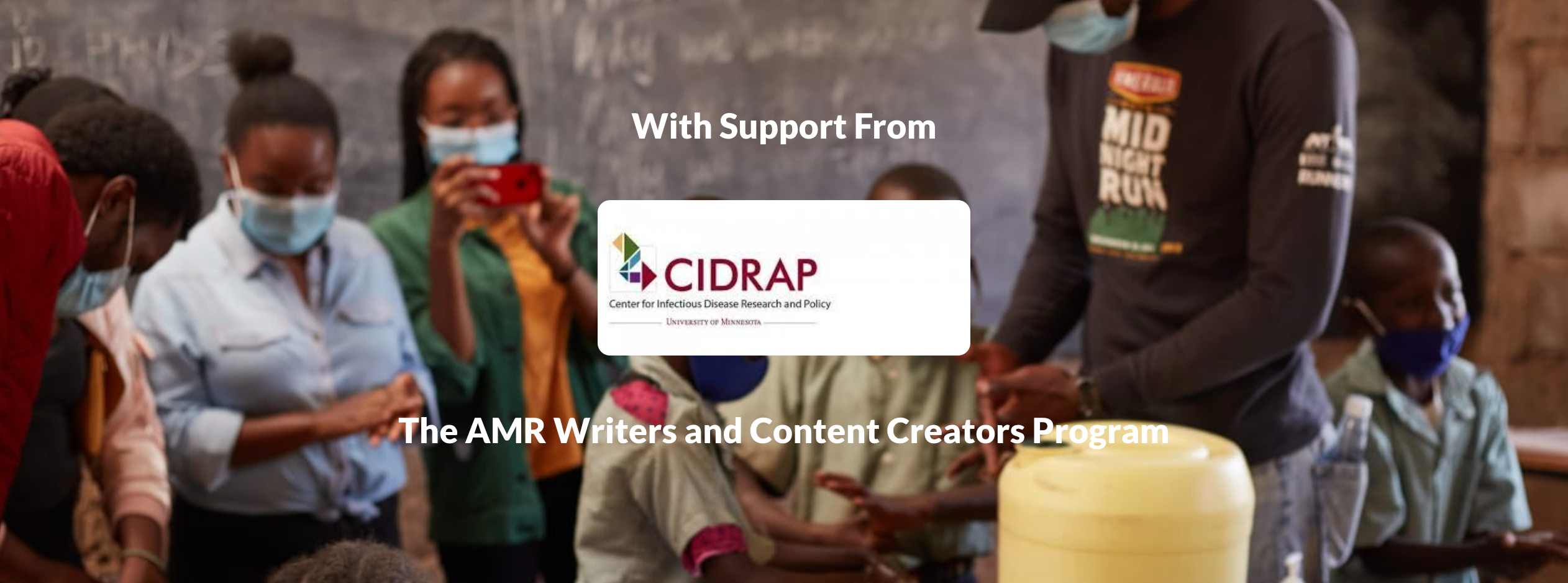
University of Minnesota School of Public Health Applied Practice Experiences
CIDRAP-ASP has hosted students from the University of Minnesota School of Public Health as they conduct research into antimicrobial resistance and stewardship in fulfillment of their Applied Practice Experience (APEx) or Master's thesis requirements.
In 2022, Ingrid Jacobson, MPH, wrote "Antifungal Therapy Guidelines for Pediatric Acute Leukemia Patients Infected with Candida and Aspergillus Species: An Analysis of Discrepancies between Published and Hospital-based Guidance," a report that includes an assessment of whether or not US and international hospitals base their publicly available recommendations on the most up-to-date published consensus.
In 2023, MPH candidate Holden Baker wrote "Filling the 'Discovery Void:' Policy Incentives and Antimicrobial Stewardship to Encourage Antibiotic Innovation," a backgrounder that explores incentives for antibiotic development, and "The Antibiotic Development Challenge: The Role of the US Policymaker," a policy brief targeted toward advancing strategies that encourage antibiotic research and development.
AMR Fact Sheet
AMR threatens the progress toward the Sustainable Development Goals and requires urgent action from a variety of actors, including from human health, food production, environmental, and veterinary sectors.
The misuse of antimicrobial drugs is accelerating AMR. The more antibiotics and other medicines we consume, the more likely bacteria and other microbes are to develop resistances, making AMR one of the most urgent threats to modern medicine and humanity overall.
How resistance occurs
Antimicrobial resistance occurs when microbes, such as bacteria, evolve the ability to survive exposure to medicines previously used to treat them.
Antibiotic-resistant bacteria are spreading
Antibiotics that were once effective in treating bacterial infections are now becoming ineffective, increasing the risk of infection, severe illness and death. Every year there are already thousands of people dying due to AMR.
The role of stewardship
Antimicrobial stewardship can promote the responsible use of antimicrobial drugs in human medicine, veterinary medicine, and agriculture to help combat AMR and preserve drug effectiveness around the globe.
Our underwriters
Unrestricted financial support provided by

Supporting Underwriter






